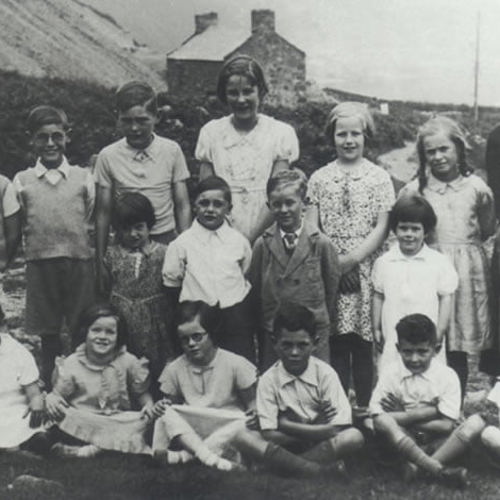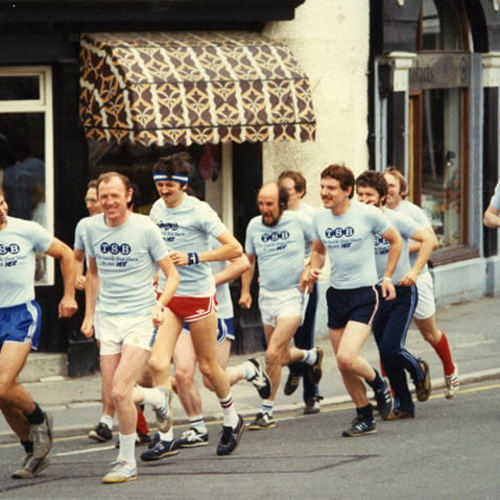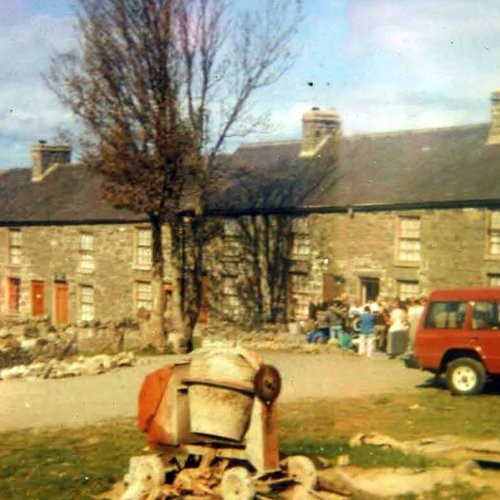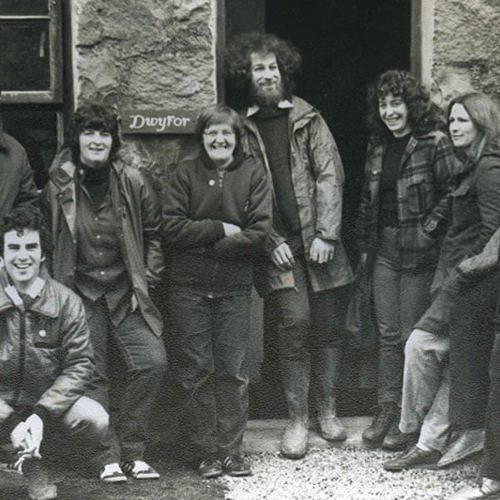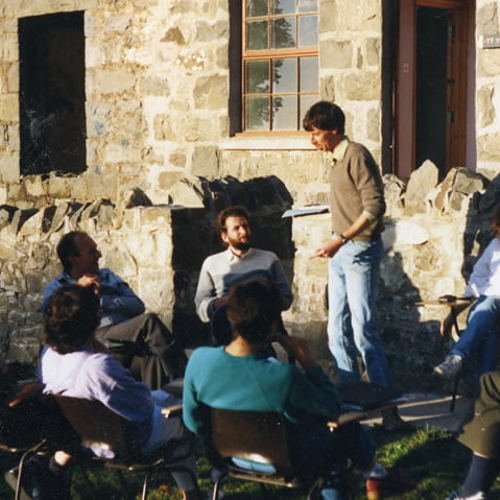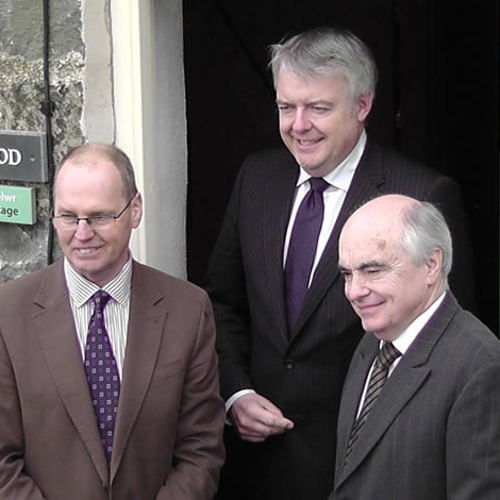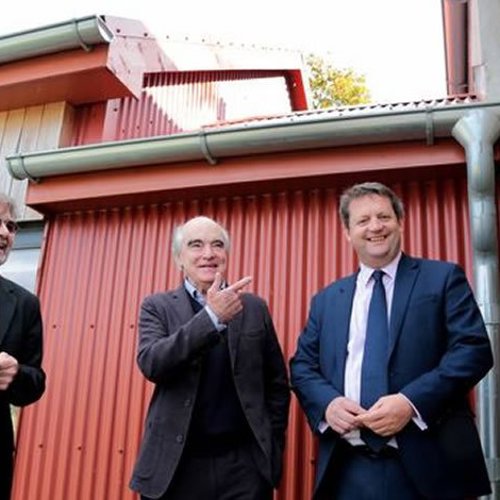In 1970, Dr Carl Clowes moved from his specialised job at Christie Hospital, Manchester to run a single-handed doctor’s surgery at Llanaelhaearn. He and his wife Dorothi were determined to raise their children as Welsh speakers. But, what he discovered was a community facing an uncertain future, and he felt that something had to be done. The local granite quarry at Trefor was facing closure and the local school at Llanaelhaearn was also threatened. If the area was to survive, employment would have to come from somewhere.
Since the first Welsh language act came into force in 1967 there was a growing demand for Welsh speaking staff at many public organisations across Wales. The doctor considered it necessary that a residential centre offering Welsh courses throughout the year should be opened if this was to be ensured.
As the two ideas blended together, and although the buildings were in ruins by the 70s, it was decided that a dedicated Centre would be established at Nant which would generate employment for local people and give a necessary boost to the language.








